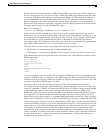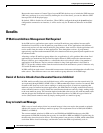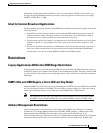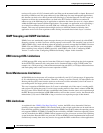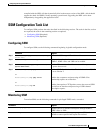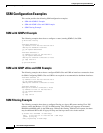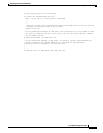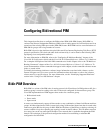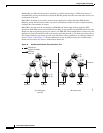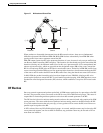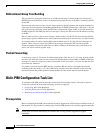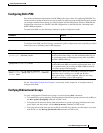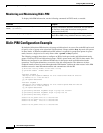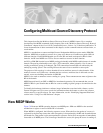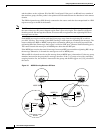
IPC-471
Cisco IOS IP Configuration Guide
Configuring Bidirectional PIM
This chapter describes how to configure the Bidirectional PIM (bidir-PIM) feature. Bidir-PIM is a
variant of the Protocol Independent Multicast (PIM) suite of routing protocols for IP multicast and is an
extension of the existing PIM sparse mode (PIM-SM) feature. Bidir-PIM resolves some limitations of
PIM-SM for groups with a large number of sources.
Bidir-PIM is based on the draft-kouvelas-pim-bidir-new-00.txt Internet Engineering Task Force (IETF)
protocol specification. This draft and other drafts referenced by it can be found at the following URL:
ftp://ftpeng.cisco.com/ipmulticast/drafts.
For more information on PIM-SM, refer to the “Configuring IP Multicast Routing” chapter of the
Cisco IOS IP Configuration Guide and the Cisco IOS IP Command Reference, Volume 3 of 3: Multicast.
For a complete description of the bidir-PIM commands used in this chapter, refer to the “IP Multicast
Routing Commands” chapter of the Cisco IOS IP Command Reference, Volume 3 of 3: Multicast. To
locate documentation of other commands that appear in this chapter, use the command reference master
index, or search online.
To identify the hardware platform or software image information associated with a feature, use the
Feature Navigator on Cisco.com to search for information about the feature or refer to the software
release notes for a specific release. For more information, see the “Identifying Supported Platforms”
section in the “Using Cisco IOS Software” chapter.
Bidir-PIM Overview
Bidir-PIM is a variant of the PIM suite of routing protocols for IP multicast. In PIM, packet traffic for a
multicast group is routed according to the rules of the mode configured for that multicast group. The
Cisco IOS implementation of PIM supports three modes for a multicast group:
• Bidirectional mode
• Dense mode
• Sparse mode
A router can simultaneously support all three modes or any combination of them for different multicast
groups. In bidirectional mode, traffic is routed only along a bidirectional shared tree that is rooted at the
rendezvous point (RP) for the group. In bidir-PIM, the IP address of the RP acts as the key to having all
routers establish a loop-free spanning tree topology rooted in that IP address. This IP address need not
be a router, but can be any unassigned IP address on a network that is reachable throughout the PIM
domain. This technique is the preferred configuration method for establishing a redundant RP
configuration for bidir-PIM.



